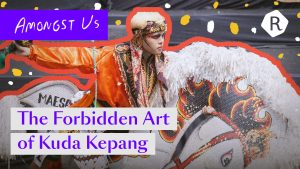But for a mix-bag like Singapore, one wonders: what is our style of street dance?
This is the question 24-year old Rachel Tan set out to answer a year ago when she first conceptualised the idea for her FYP, aptly titled Rojak Dancin.
Drawing from Singlish, she explains her thought process to me over a cup of iced coffee: “Singlish is vernacular. We’ve taken the English language, tweaked it, infused it with our culture and made it our own. Just like street dance. It’s a language and form of storytelling that has come from overseas. Elements of it, like freestyling and growing a community, are a foreign concept to us.”
“How have we made it into a narration of our cultural identity? How have we made it uniquely Singaporean?”

“These moves were all created or adapted by [local] dancers. Dance was the foundation and the template from which they started from,” she tells me. “Because street dancers freestyle, they take inspiration from whatever is currently trending, what is around them, and what people are finding funny at that point of time, and put it into their dance.”
Freestyling has always been a crucial tenet of street dance, and it’s what gives dancers the room to explore, experiment and put their own spin on tried and tested moves. Here are some moves that we can call our own
1. The Pokemon Go Sign
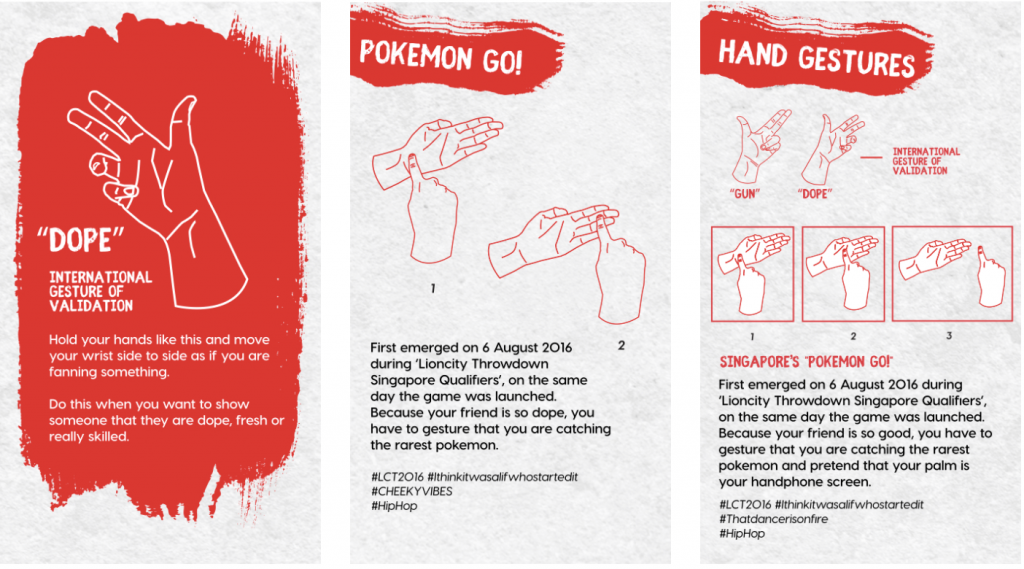
When Pokemon Go was launched back in 2016, it not only took Singapore but the world by storm. On the same day the game was launched, Singaporean dancer Alif reconfigured the dope gesture to mirror that of the finger-pushing action one does when throwing a Pokeball in the game.
2. The Blur Sotong
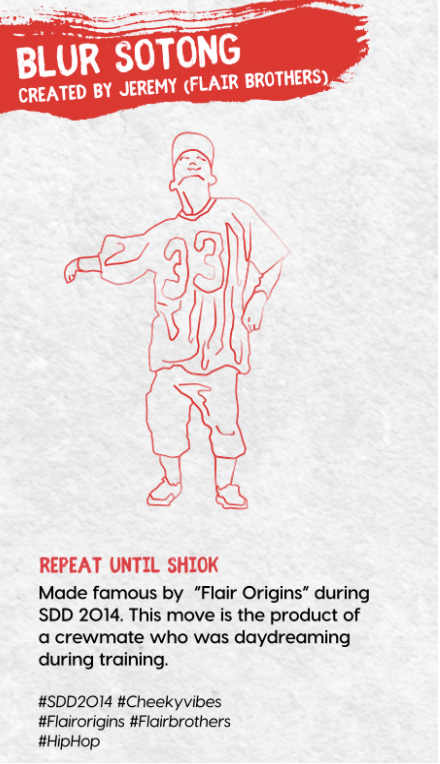
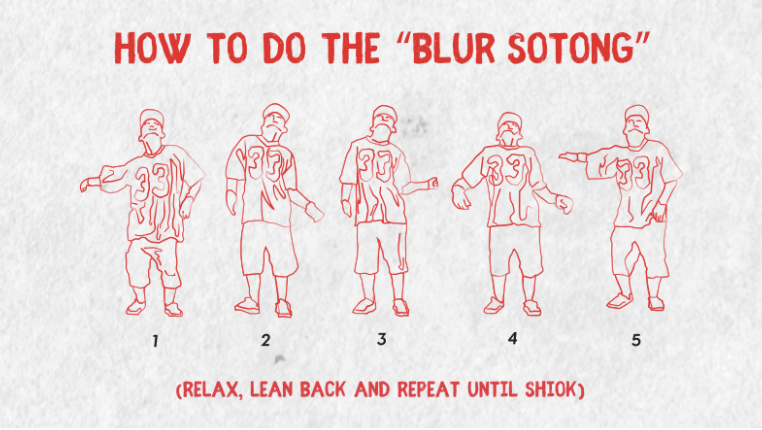
3. The Leg Dab

Most of us have seen Mediacorp’s cringe-inducing version of the dab in their Guji Guji video released in celebration for this year’s Chinese New Year. But there exists another version of it. The leg dab, a move performed by Singaporean dancer Audrey during a practice session at *SCAPE.
4. Throwing That Smile Away
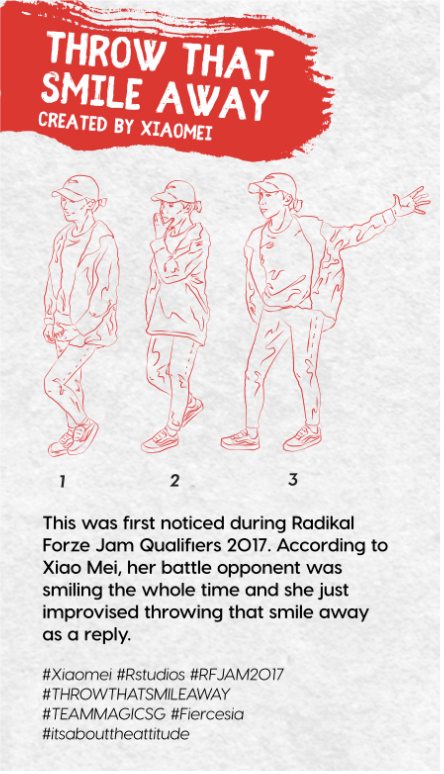
Dancers face off, taking turns to freestyle to a track spun by a DJ. After each dancer has completed their round, the winner is then decided by a judge.
One such battle is the Radikal Forze Jam held at *SCAPE each year. During the battle, Xiao Mei, a dance teacher in Singapore, noticed her battle opponent smiling and in true battle style, improvised throwing that smile away in reply to her opponent – a move that later became iconic.
5. The Spidey
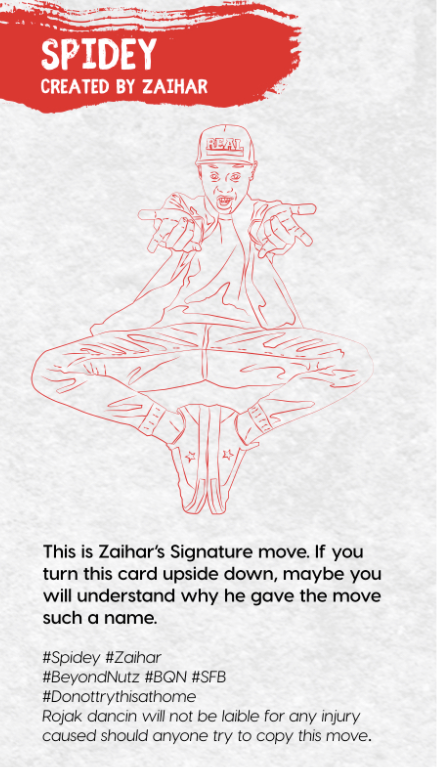
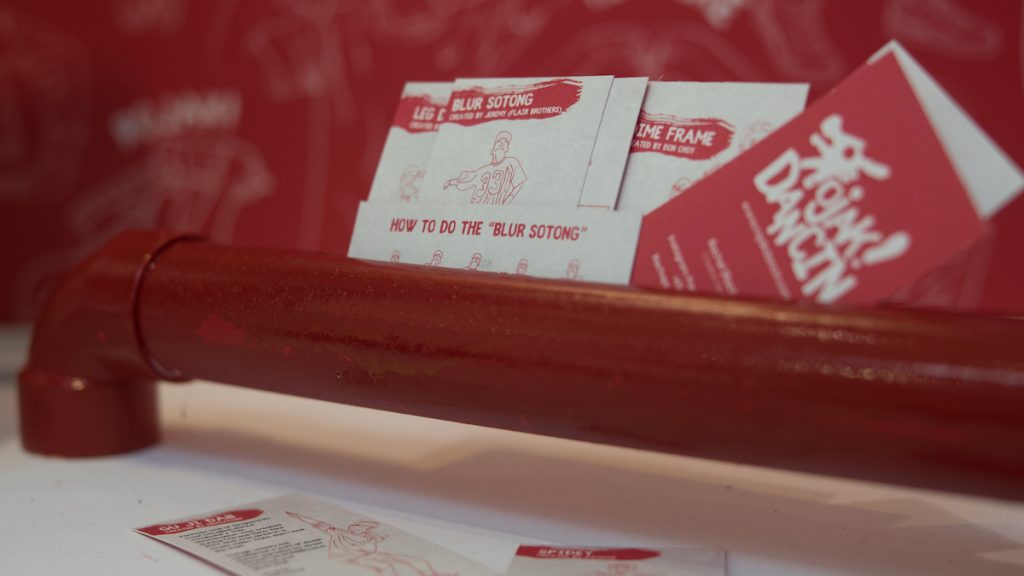
Most of Singapore’s street dance culture has gone relatively undocumented so far, relying primarily on the use of social media and word of mouth amongst dancers to keep it alive. Hence, Rojak Dancin became Rachel’s attempt to trace, document and conserve an evolving part of Singapore’s culture.
“We create, but we’re not really proud of what we create. We don’t document it. In the US, they have all these dance moves that they create, remember, give names to, and pass down to future generations. Sure we take pride in our community, but we can definitely do so much more.”
And so Rojak Dancin is the first step in this direction.
–
Rojak Dancin is the final year project and brainchild of Rachel Tan, a graduate from Nanyang Technological University with a degree in a visual communications. A street dancer herself, she has sought to document Singapore’s street dance culture and uncover what exactly it is that makes it so unique.
(Street dance originated from New York in the 1970s and spread across the world. It emerged not in dance studios, but instead, in social and open spaces such as clubs, streets, parks and alleyways. In Singapore, this can take place in shopping centres, schools, *SCAPE or even, Changi Airport. Some of the more well-known styles include Breaking, Popping, Locking and Hip-Hop. It is usually improvisational (freestyle) in nature.)
Rojak Dancin is currently still a work in progress. If you would like to contribute in terms of dance vocabulary or knowledge, please email Rachopsdesign@gmail.com




